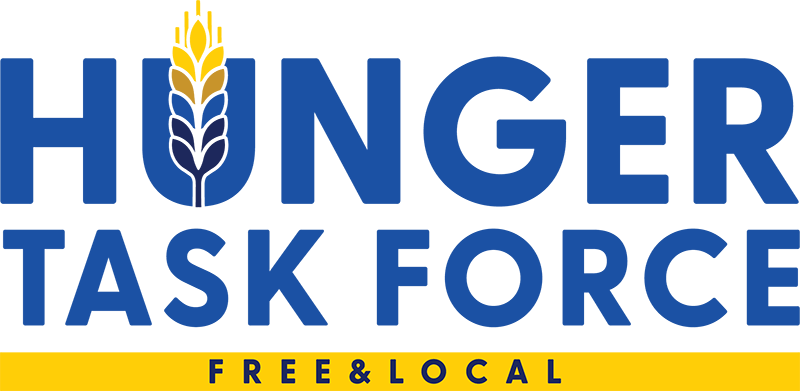Claire Thornton
USA TODAY
Publishished Nov. 17, 2023

The staggering hunger crisis in America: How you can help struggling food banks this year
Hunger in America is unabating, and in 2023, safety nets meant to catch people at their most vulnerable are seeing spikes in visits compared to last year. Food bank leaders from all corners of the country tell USA TODAY their neighborhood pantries are serving more people while using less resources, as economic pressures continue to ravage the budgets of low-income Americans and service providers alike.
Since pandemic-era boosts to government food aid ended earlier this year in many states, families are turning to food banks to close a gap in need that feels like it has no end in sight. The level of hunger is so great, some food bank CEOs compare the current moment to past economic recessions.
“From where I’m sitting, after 28 years of food banking, what we have is the logical result of 40 years of dire economic inequality,” said Susannah Morgan, president of Oregon Food Bank. Food bank budgets have been buckling under inflation in 2023, causing some nonprofits to buy less food and cut back on services.
Data released this fall from the U.S. Department of Agriculture showed food insecurity increased in 2022 for the first time in more than a decade. “This is the worst rate of hunger in my career,” said Morgan, who has worked at food banks in Boston, San Francisco and Anchorage, Alaska. “It’s so large, it’s hard to wrap your head around.”
Holidays bring extra pressure
During the holidays, parents, and especially moms, feel even more pressure to provide for their families, said Eric Cooper, CEO of the San Antonio Food Bank. “The last year they’ve been falling behind,” Cooper said, and when around 300 families left the San Antonio Food Bank with turkeys in-hand this month, he said, they felt “reassurance” that they could create positive memories during the Thanksgiving holiday.
So many parents recall holiday memories of their own, laden with the aromas of turkey and gravy, said Sherrie Tussler, CEO of Wisconsin’s Hunger Task Force food bank network. “All of us have these memories,” Tussler said. “We can see our parents cutting the food. We can taste it. We can see our grandma cutting a pie.” When people can’t afford all the ingredients that go into making a special holiday meal, “that makes you sad – sadder than sad,” she said.
Behind the scenes, food bank staff and volunteers feel “a lot of pressure at this time of year,” as they frantically purchase turkeys and other food items to help satisfy the country’s gaping need, Tussler said.
“I don’t know if we can keep up,” Morgan said. “We’re going to keep up for the next six or nine months, but in three years, I don’t know if we can keep up.”
How can I donate food?
Donating money or nonperishable food to food banks, pantries and soup kitchens in your local area or neighborhood will go a long way to bolster their budgets and allow them to help more people, Tussler said. The more localized the organization is, the better, she said, explaining that smaller nonprofits have smaller budgets and less resources to begin with.
Near Fort Myers, Florida, the Gladiolus Food Pantry this month is asking for donated frozen turkeys, stuffing, mashed potatoes, canned or jarred gravy, cranberry sauce, canned green beans, canned corn and chicken or beef broth.
The food pantry serves over 200 families living in Lee County once a week. Many are still recovering from tourism industry jobs lost to Hurricane Ian. In the past month, 40 new families came each week, said staffer Mary Burns.
“When you go into the supermarket and they’re having a buy-one-get-one, get them. That way you can use one, and donate one,” Burns said. “Drive around your neighborhood and look for the signs that say, ‘food pantry here on Sunday,’ and see how you can help your neighborhood.”
Year-round, the pantry always needs food and kitchen items that people normally don’t think of, and things that kids enjoy, Burns said, especially:
-
- Kids cereal.
- Shelf-stable milk that doesn’t need to be refrigerated until after its open, like Parmalat, and some nut milks.
- Cooking oil.
- Peanut butter and jelly.
- Spices.
- Tuna.
- Macaroni-and-cheese.
- Spaghetti.
- Can openers.
Local news organizations, such as newspapers or radio stations, may have articles online listing different food banks and pantries in your area. Donating to church food pantries is also a great way to get started.
The homepage for FoodPantries.org lists tens of thousands of food banks across the country where users can search by state and city. The USDA’s website lists more than 250 of the agency’s eligible distributors here.
Food bank demand points to economic problems
In Milwaukee County, Wisconsin, Tussler’s network of 47 food pantries are an economic bellwether, she said. “Right now, the numbers just look bad,” she said.
This year across Milwaukee County, food pantries saw a 50% increase in visits after extra pandemic-era SNAP allotments ended in Wisconsin in March. During the same time period, and with the same SNAP cut-off, Morgan’s food bank network in Oregon saw the same: a 50% spike in demand, she said.
Those increases, combined with inflationary pressures on food banks mean the nonprofits are “having to ration the food they provide because they see how long the line is,” Claire Babineaux-Fontenot, CEO of Feeding America, told USA TODAY.
In Oregon, Morgan said she worries how much longer current patterns can continue before something in the system breaks completely. “I worry about a vicious cycle,” she said. “I worry about 40 years of income inequality hitting a place where it’s very difficult for us to recover from – hitting an irreversible trend.”
Donations, government resources dropped in 2023
Food bank leaders said monetary donations from the public swelled in 2020 and 2021 during the worst of the COVID-19 pandemic. It felt like a moment when the nation came together to help those most in need, Tussler said.
In 2020 and 2021, stimulus checks and the expanded child tax credit helped bring poverty in the U.S. to record lows. But when government resources began drying up in 2022, poverty rates swung back in the opposite direction. Now, food pantries across the country are getting less monetary donations from the public because everyone is feeling inflation’s pinch too, Babineaux-Fontenot said.
Due to the national health emergency in 2020 and 2021, the federal government flooded food banks with food commodities through the USDA’s Commodity Credit Corporation. This year, it feels like “there is no additional food coming from the federal government,” Tussler said, which is “exacerbating some of the challenges we have.”
“It’s the perfect storm of things dragging things down,” Babineaux-Fontenot said.
On the East Coast, the Food Bank for New York City had to scale back its longstanding low-income tax-refund filing assistance program due to budget constraints, said Zac Hall, who runs programs at the nonprofit. “We weren’t naïve to think the amount of support we received during COVID would be sustained, but the demand has still not gone back to pre-COVID levels,” Hall said.
In the Alamo City, Cooper gave the same answer: “The need has stayed up and the support, year over year, has been shrinking.”
Inflation hasn’t eased for food prices
After inflation peaked in June 2022, high prices have come down a little in 2023. But unlike most other consumer categories, inflation in grocery prices has remained stubbornly high.
Because a greater share of poor Americans’ income is spent at the grocery store, inflationary food prices take a heavier toll on their budgets, Hall said, adding that seniors he works with have to decide between paying for medicine and procedures or having meals. “Those are really hard and inhumane decisions to be made, and that’s not something that we want to see be sustained,” Hall said.
In San Antonio, Cooper said families he serves routinely report they can’t afford apples, berries and tomatoes. When that happens, he said, people buy more of cheaper items that aren’t as healthy.
“We’re still at such a high rate of inflation on so many food categories that diets have shifted,” Cooper said. “Families tend to move into more boxed dinners, carbs, starches, cheaper belly-fillers.” People can improvise to save money at the grocery store, but other areas of a family’s budget, like housing and gas, are much more fixed, he said.
“For every household budget, rent eats first,” Cooper said.
Among other factors, food insecurity can be measured by lack of variety in one’s diet, according to the USDA. In 2022, more Americans reported eating lower quality diets or skipping meals entirely, the agency reported.
Food stamp program needs to be strengthened, food banks say
Food banks can only support struggling Americans so much, because getting a bag of groceries is not the same as putting money in someone’s pocket who needs it, Hall said. “We are not a replacement for SNAP,” he said. “SNAP is the largest and best anti-hunger program we have in the country.”
Cooper calls SNAP “our nation’s first line of defense” against hunger, one that helps families in a direct way, while also filling some gaps food banks will never be able to satisfy. “It’s so dignifying for a family to be able to go to their grocery store and select the items that are culturally relevant,” Cooper said. “And it accommodates religious preferences.”
This fall, as Congress delays talks on the Farm Bill, which funds SNAP, Babineaux-Fontenot said lawmakers shouldn’t be allowed to get away with adding restrictions to funding meant for the most vulnerable in society.
“Isn’t it remarkable that in the middle of a pandemic with supply chain crises and all that was going on, that we actually saw a decrease in food insecurity rates,” she said. “Let’s not trick ourselves into believing we don’t know that we know how to do this.”
Hunger Task Force is Milwaukee’s Free & Local food bank and Wisconsin’s leading anti-hunger organization. The organization’s mission is to feed people in need today and end future hunger. Hunger Task Force operates a food bank that provides healthy food absolutely free of charge across Wisconsin. As advocates, Hunger Task Force works to end hunger through strong public policy work, legislative analysis, education and community organizing. For more information, visit HungerTaskForce.org.
###
